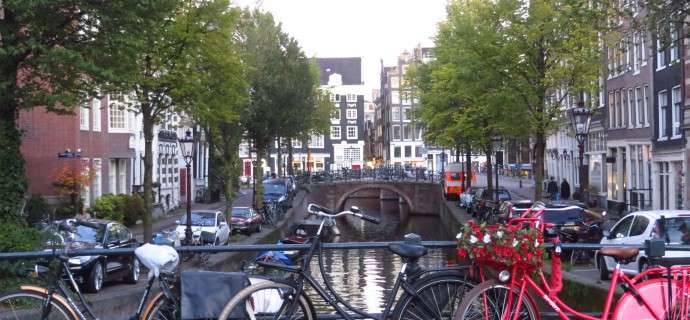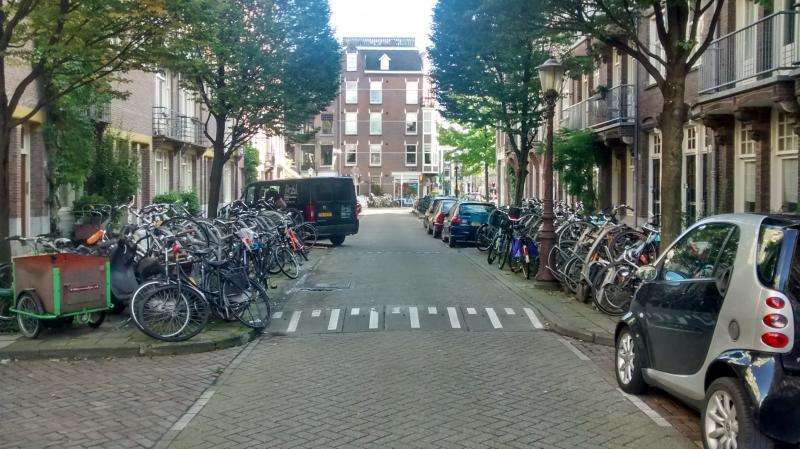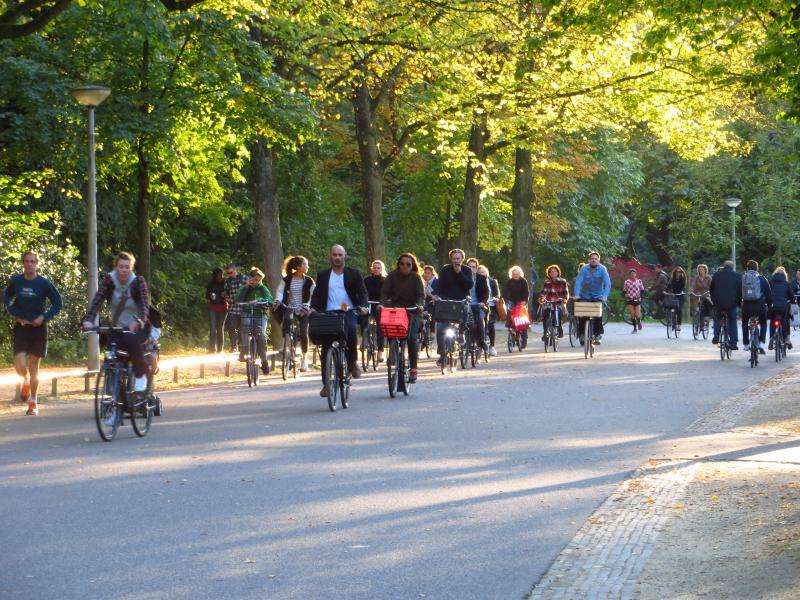How Amsterdam's wonderful bicycle culture contributes to public health

I've been riding a bike since I was a kid – first a tricycle, then one with training wheels, a couple of BMXs during my teens, and over the past 15 years, mountain bikes. I love riding my bike through quiet wooden trials away from the buzz of the city. It's the best form of relaxation and meditation I have found. When Canadian weather permits, cycling to work is also a fantastic way to start and end the work day with a bit of physical activity.
I recently spent some time in the Netherlands, specifically Amsterdam, while on conference. During the week I was there I became quite enamored with the city.
Even if you've never been to The Netherlands, you've probably heard about their famous bicycle culture. And what a culture it is! In Amsterdam, there appear to be more bicycles than cars, as the below photo well illustrates.
Bicycles are literally everywhere: chained to every lamp post, tree, railing, other bike, and every now and then, a bike rack. The dedicated red bike lanes, which are separated by a curb from the road, are usually more spacious than the sidewalks.
In fact, walking can be a bit of a hazard. When you're crossing a street, you often have to do so in stages – first crossing the nearest bike lane (sometimes two-way bike traffic), then one direction of car traffic, another direction of car traffic, and finally another bike lane (again, possibly with two-way traffic). I thought crossing streets in Vietnam was a challenge (there are no lights or pedestrian crossings, so you simply step out into traffic and everyone weaves around you), but I actually found the Amsterdam experience more stressful. But if you're on a bicycle, getting around couldn't be any easier. Cyclists always seem to have the right of way – pedestrians, cars, and busses be damned!
The Dutch get started in cycling at a very young age, and continue well into their golden years. Infants are often strapped into a child seat, which sits on top of the mother's handlebars and is protected from the wind by a small windshield. Once the kids become a bit too big for the handlebars, they are transported by their parents in freight or cargo bicycles. And not long after that, they get their own bikes.

The other thing I found interesting is that 99% of people rode the same style of bicycle; what we, in North America, often refer to as a cruiser bike. These are single gear bikes, with comfortable seats, solid frames, and upright handlebars. They are neither built for speed or ruggedness, but for everyday urban commuting. In Canada, when you walk into a bike store, you are bombarded with multiple divergent options – front-suspension mountain bike, full-suspension mountain bike, fat bike, trail bike, road bike, BMX, fixed gear bike, cruiser, etc. The wide selection of bicycles but low proportion of cyclists in North America is at odds with the one-bike-for-all that is actually used by nearly all cyclists in The Netherlands.
Although a fair number of people commute to work on a bicycle, especially in urban centres, I'd wager that most cycling in North America is done under the premise of exercise: we wear special clothing, do it a couple of times a week, track our mileage/speed/calories, and sometimes we have to drive out of the city, with our bikes hanging off the back of our cars. What really struck me was that I didn't see a single person in Amsterdam cycling for exercise purposes. Not one person suction-cupped in Spandex gear, no clip on pedals, no attached water bottles or camel packs, no speedometers or GPS trackers, no gangs of weekend road-warriors on bikes worth more than cars occupying entire traffic lanes; just thousands of people dressed in their regular clothes cycling comfortably on minimalist cruisers from one place to the next, moving seamlessly through their environment with minimal effort, all the while accumulating significant mileage on a daily basis.

Never before has the distinction between what most North Americans focus on – exercise, versus what we should do more of – physical activity – been so abundantly clear to me.
We could learn a thing or two from the Dutch.
This story is republished courtesy of PLOS Blogs: blogs.plos.org.


















